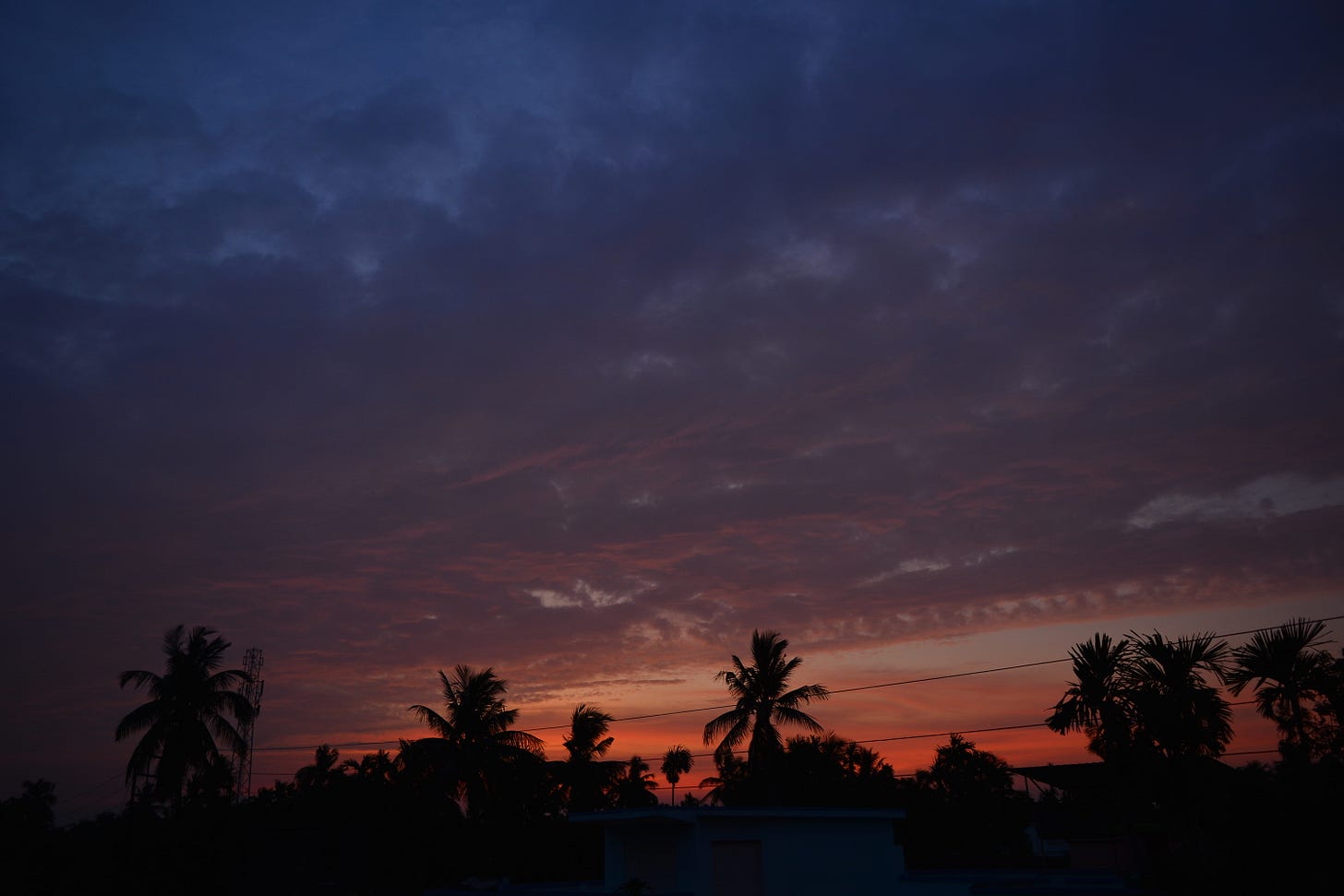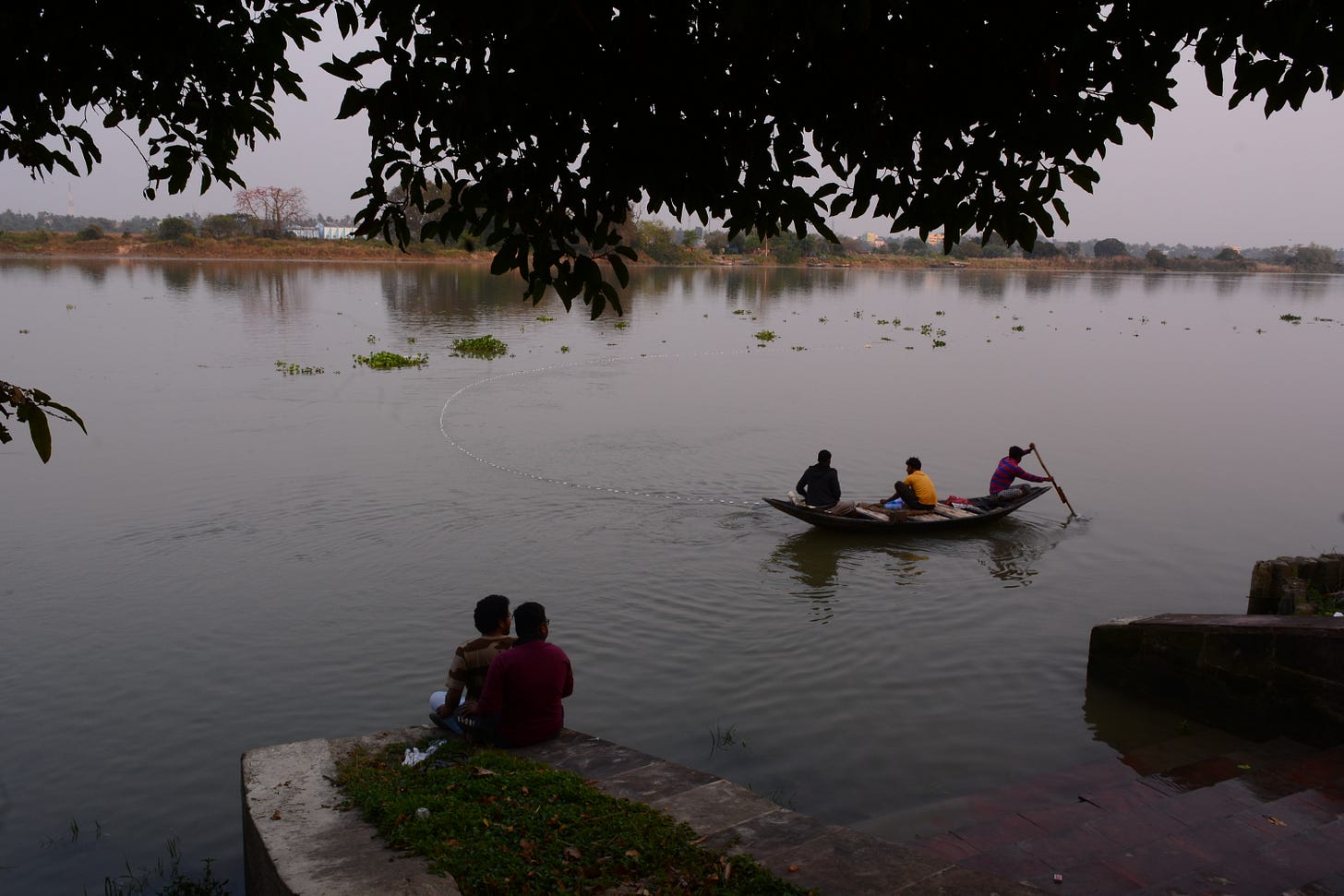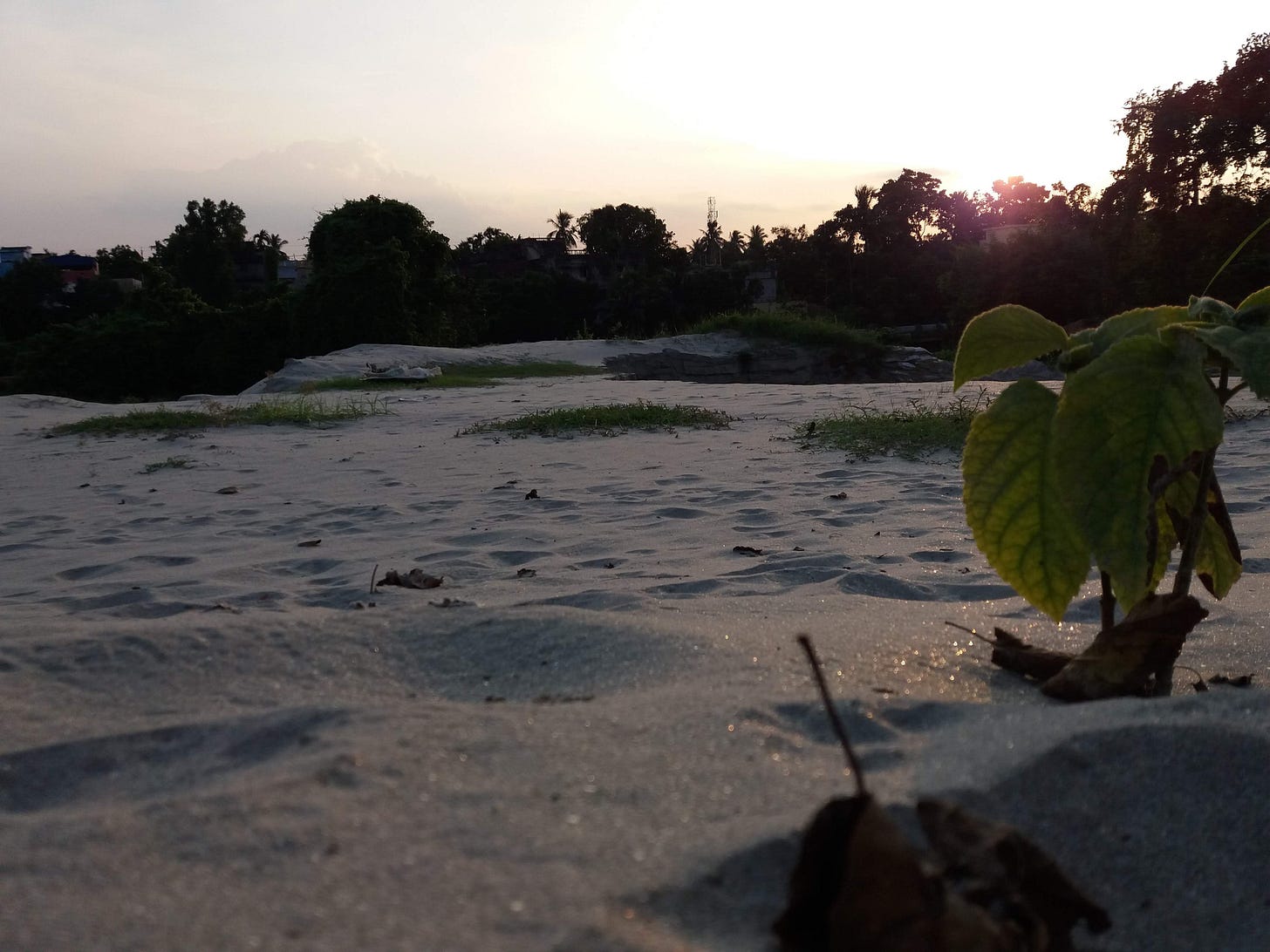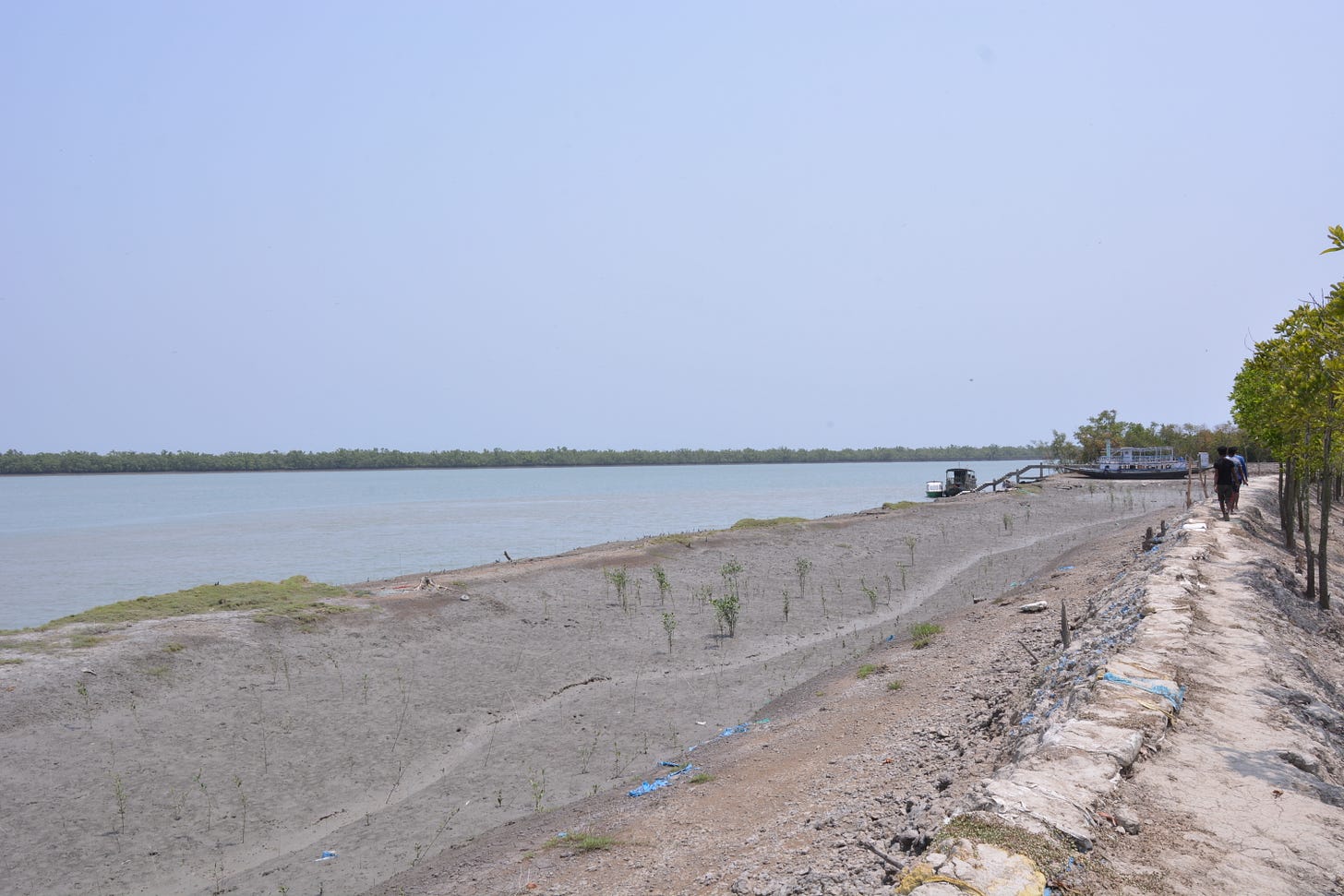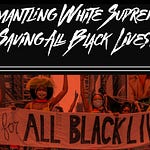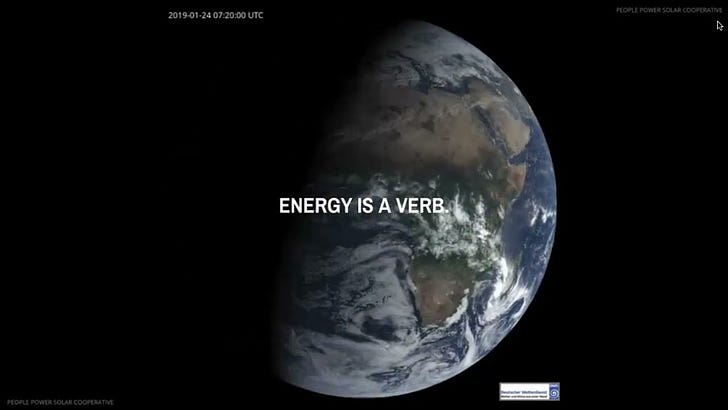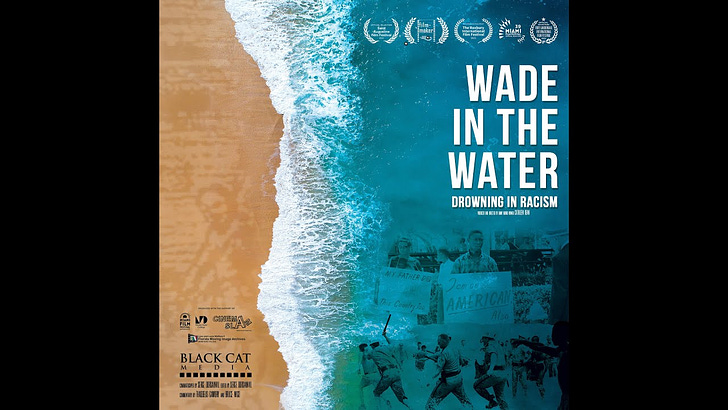Arijit Reeves - Climate Autobiography
Hailing from a very small suburban town in India called Bansberia, I grew up living on the banks of the river Hooghly, surrounded by more trees than concrete.
Summer sunsets are mesmerizing to watch from the terrace
Video: A little montage of our garden and beings that dwell in and around.
My whole school life has been spent here in this very town, spending the summer holidays cycling around with my friends and lazing by the riverside almost every late afternoon.
We would chill by the riverside, wave at passing boats and watch people fishing.
There is this place by the riverside where an illegal river sand mining business used to run. It was shut down a few years back but it ran for a long time. They would pump up water and silt from the riverbed and dump it into huge trough-like basins and allow the water to slowly move back into the river via outlets, leaving behind the white sand.
Pipeline that ran from the riverbed to the troughs on the riverside
I remember running around on the white sand and playing football in the late afternoons. It felt like a mini beach at that place.
The sand would be mined during the afternoon and transported at night.
It was only many years down the line that I understood the massive impact of that activity when a local bridge caught a crack in one of its pillars and had to be closed off and repaired right away. I didn’t know what kind of thought it sparked in me, but it did affect me.
One could see little pioneer species growing out of the sand.
When I moved to the city of Kolkata for attending college, two things stood out to me. The sheer population of the city and the quality of air. I remember feeling a certain heaviness in the air while breathing. There are more than a few reasons for that but I only got to know about them in detail during my master’s. I used to be a field volunteer for a research project surrounding air quality & its health impact and it was during those days that we quantified the pollution and saw first-hand how bad the situation was. Particulate matter was through the roof, both 2.5 microns and 10 microns and as for the dissolved gases like ammonia, sulphur oxides, nitrogen oxides, etc., it was the sulphur oxides that were dominant due to diesel-run vehicles. Have a look at the documentary I shot for the research project and maybe that could give a better explanation.
Video: This project is aimed at finding the pollution hotspots of the city and predicting their change.
After my master’s, I got work as a Media Consultant for a project called ‘Delta Lives’ in the ecologically and environmentally volatile zone called the Sundarbans, the world’s largest delta ecosystem.
Video: A sneak peek into the village life in the world’s largest delta.
Part of our job was to highlight the regional art, craft, practices and skillsets to the world, that are slowly fading away into oblivion. While working I came across stories about the survival of the villagers against tropical cyclones and storm systems. One of those stories that really stuck with me was of the cyclone ‘Amphan’ in May of 2020. When the cyclone hit the Sundarbans, the villagers were as prepared as they could be but one thing always evaded their preparedness. The embankments. The riverside was embanked but was not strong enough to hold against the maddening waters during the cyclone.
Video: I once daringly filmed a thunderstorm from the terrace. But this is pretty much how cyclones start.
When the water rose in the river, it started pushing against the embankment and if that were to keep on happening, it would eventually break it and flood their fields of rice and vegetables with saltwater and render it useless for agriculture. With nothing to stop nature, the villagers decided to do anything to save their future. They made it to the embankment and laid down, hand-in-hand, on the slope in order to stop the water from breaking the embankment. They lay there for hours till the water calmed down and the worst part of the cyclone had blown over. After I listened to the story, it dawned on me to what lengths the people of the world will go to save their families, their communities and their future from being wiped off of the face of this Earth.
The embankment, made out of sacks of sand and soil, where the villagers lay down to stop it from breaking.
Currently, I work as a Communications Associate at the Indian Institute of Technology in Gandhinagar, Gujarat. With this work, I hope to shed more light and bring to the attention of the greater mass the progress of research in the country and the various strides being taken in academia to better the lives of everyone in the world. I believe everyone should have a peek into the work of researchers that strive tirelessly, day and night, to make the world a bit better to live in the next day. It shouldn’t just be exclusive to other researchers and academicians what their labour is bringing to the table. I wish to bridge the gap between the institutes, the society and the administration to make a seamless transaction of information and ideas that will help alleviate local problems using global solutions.
When you spend years living in a single place, you end up looking at your surroundings with greater depth and with each passing year, you become better at analyzing the information you absorb from it. You also bear witness to some of the major changes that take place around you and more often than not, it affects you in ways you don’t understand. But when you do, be sure to act on it. I don’t envision a future where everyone is rich but I do envision one where everyone is happy and no one lives in fear of losing their life to calamities of nature. And to that end, everyone must at least understand the dynamics of the world and how our actions now will shape the future. Because if we don’t start small now, we will never make big changes then. Nobody knows what the future holds or how it will change. But it will change, no doubt. And it is up to us to make it a good one.
So go on ahead and bring small changes.
- Arijit Reeves
Thank you everyone for reading and helping us kick off Season 2! If you would like to learn more about Arijit’s work and get in touch, please let us know. Over the next 6 months, we will invite different guests to share their Climate Autobiographies in their own way. Can’t wait to share the next one on November 3rd!


